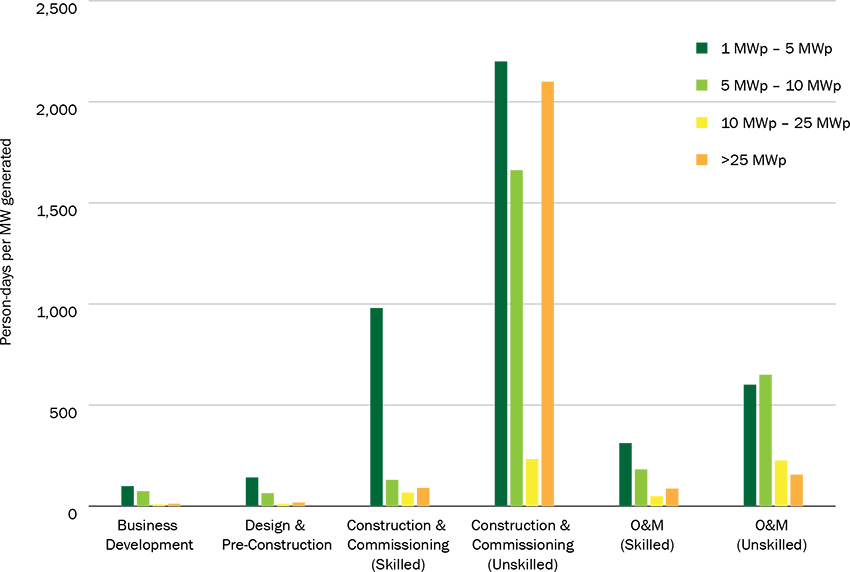Report
Solar Power Jobs
Exploring the employment potential in India’s Grid-Connection solar market
Arunabha Ghosh, Rajeev Palakshappa, Rishabh Jain, Shalu Agrawal, Poulami Choudhury
August 2014 | Energy Transitions, Sustainable Livelihoods
Suggested Citation: Ghosh, Arunabha, Rajeev Palakshappa, Rishabh Jain, Shalu Aggarwal, and Poulami Choudhury. 2014. Solar Power Jobs: Exploring the Employment Potential in India’s Grid-Connected Solar Market. New Delhi; New York: Council on Energy, Environment and Water and Natural Resources Defense Council.
Overview
This report, in collaboration with the National Resource Defense Council (NDRC), examines data available about employment generation in the Indian solar sector. It analyses the results of a survey conducted electronically via email as well as by telephone. As many as 116 organisations operating in the solar industry in India — a mix of project developers, component and module manufacturers, and Engineering, Procurement and Construction (EPC) companies – participated. Further, it analyses the existing solar policies in India in order to make specific recommendations to shape policies to leverage employment opportunity of solar photovoltaic (PV) market in India.
Solar energy projects create green jobs and boost India’s developing economy. Solar PV was recognised as creating more jobs per unit of energy produced than any other energy source.
Key Findings
- The solar market generated 23,884 cumulative jobs in the solar industry from 2011 to 2014. Supporting the growth of solar industry and reporting of jobs numbers by local businesses can continue this promising trend.
- The construction and commissioning phase generate the most employment for a PV project.
- Smaller projects up to 5 MW in size may provide most employment opportunities per MW. Targeted policies and clearer objectives may be more effective to accomplish diverse goals such as solar deployment, job creation, domestic solar manufacturing & human resource development.
- Business and policy makers can formulate better policies and programs by tracking and reporting solar energy job numbers. They can demonstrate the importance of renewable energy to the local economy.
Person-days per MW Generated During Each phase

Source: NRDC–CEEW survey, June 2014.
- Highest number of FTE (Full Time Employment) jobs per MW is generated by projects with a capacity of 1 to 5 MW. Increases in project size reduce human resources required per MW to execute a project.
- There is a need to find optimum average capacity for projects to maximise employment generation potential, while being mindful of project feasibility and benefits that could accrue from economies of scale.
Key Recommendations
- Continue supporting the mature solar market. This will increase energy access, tap renewable energy source, and have an economic impact by creating clean energy jobs for local workers.
- Focus on training workers to fill jobs in phases such as construction, installation, and maintenance.
- Track and report solar energy jobs numbers. This will help business and policy makers in formulating better policies and programs and demonstrate the importance of renewable energy to the local economy.
- Undertake empirical work to evaluate the connection between specific policy instruments and employment. This information can help support a robust cost-benefit analysis of India’s solar policies.
The study estimated that the solar market generated 23,884 cumulative jobs in the solar industry from 2011 to 2014. Supporting the growth of solar industry and reporting of jobs numbers by local businesses can continue this promising trend.







